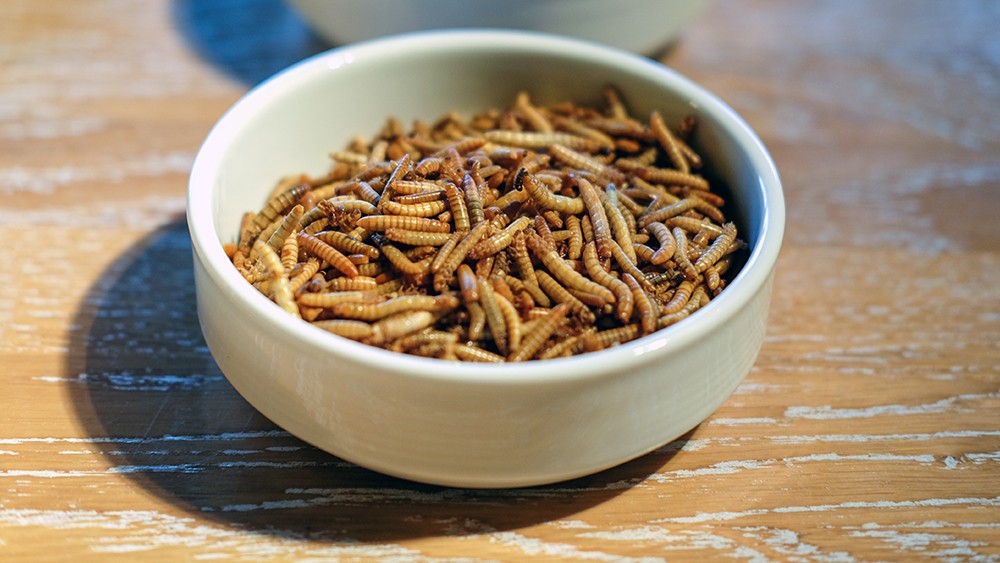Hidden epidemic: Oral infections and how to prevent them
01/25/2023 / By Olivia Cook

Oral infections like periodontitis (a chronic inflammatory disease and a significant risk factor for tooth loss) and abscesses are some of the most common infections in the world.
According to cardiologist Dr. Thomas Levy, oral infections are a stealth contributor to chronic diseases.
“Everybody thinks an infected tooth will trigger enormous pain, but chronically abscessed teeth have no discomfort at all over 95 percent of the time,” Levy noted.
He went on to explain that typically, periodontitis will proceed with an abscess. Once the gum inflammation gets bad enough and permits oral pathogens to reach the apex of the tooth, the abscess begins to form.
Levy said a digital panoramic x-ray (also known as Panorex or orthopantomogram) is commonly used by dentists and oral surgeons in their everyday practice to have a look at structures like impacted teeth, jaw anatomy and nasal and sinus cavities.
“If you have an infected tooth, it’s going to find maybe 30-40 percent of the time – add another 10-20 percent if you do a slightly more sophisticated digital x-ray.”
The signs and symptoms of periodontitis include bleeding while brushing or flossing, changes in the fit of partial dentures, changes in the way teeth feel when biting, discolored plaque or tartar on the teeth, extra spaces between the teeth, halitosis or bad breath, inflamed or swollen gums, loose or lost teeth, pain when eating or chewing, pus between the teeth and gums, receding gums and sensitive teeth.
To identify asymptomatic abscesses, you need to get a three-dimensional cone-beam computed tomography (CBCT) exam done because it creates a three-dimensional (3D) image of the patient’s anatomy – dental (teeth); oral and maxillofacial region (mouth, jaw and neck) and ears, nose and throat (ENT)

“It’s the only way we can currently detect small, otherwise, undetected abscessed teeth. And this is important because once a tooth has an abscess – no matter how small – that tooth is dead. It’s just accumulating infection that you can disseminate throughout the rest of your body,” Levy explained.
A study published in the Biomedical Journal has indicated that “the presence of periodontal pathogens and their metabolic by-products in the mouth may promote the development of systemic diseases,” including, but not limited to “cardiovascular disease, gastrointestinal and colorectal cancer, diabetes and insulin resistance and Alzheimer’s disease, as well as respiratory tract infection and adverse pregnancy outcomes.”
This is particularly important if you’re struggling with a chronic health condition, be it an autoimmune disease, cancer, heart disease or any degenerative disease,” said the cardiologist. (Related: Severe periodontitis associated with an increased risk of lung colorectal, pancreatic cancers.)
Can periodontitis be cured?
A note from Cleveland Clinic says, “You can’t cure periodontitis, but you can manage the condition with proper care and treatment.”
Periodontal pockets (the spaces or openings surrounding the teeth under the gum line) can become filled with infectious bacteria, but can be treated and reversed with good oral hygiene and/or dental treatment.
Levy said irrigating between your teeth with hydrogen peroxide water is one of the most effective strategies for reversing periodontitis.
In addition, you also want to make sure you have adequate vitamin C, as the hydrogen peroxide and vitamin C work well in tandem to eradicate pathogens and eliminate the infection.
Vitamin C and oral health
A study published in the journal Frontiers in Nutrition has found that vitamin C depletion can cause gingival bleeding regardless of oral hygiene. The study revealed that there is a “concentration-dependent inhibitory effect between vitamin C and Streptococcus mutans” – a key bacterium linked to the development of tooth decay.
Studies published in the journals General Dentistry and the Internal Journal of Medical Reviews have indicated that vitamin C contributes to collagen synthesis – an important protein for providing tooth structure, support and maintenance.
A study published in the International Journal of Environmental Research and Public Health has indicated that vitamin C contributes to a reduced risk of periodontal disease – highlighting its effects on the prevention of incidence and development of the disease.
Meanwhile, researchers of a study published in The Journal of Nutrition have associated dietary intakes of vitamin-C-rich fruits and vegetables with reduced periodontal disease after scaling and root planning. (Related: Stop dangerous periodontal disease with vitamin C and CoQ10 supplements.)
Dietary factors associated with dental erosion
A study published in the journal PLOS One has found that despite the beneficial effect of vitamin C on dental health, oral health educators must reinforce important oral health practices, such as decreasing the time that soft drinks, fruits and other sugar-containing stuff remain in the mouth.
Researchers have associated soft drinks with about 2.4-fold risk of dental erosion in this meta-analysis and could cause damage to the teeth because of low pH and high titratable acidity. In addition, plaque microorganisms metabolize the sugars in the drinks to generate organic acids that bring about demineralization.
Study authors also significantly associated chewing vitamin C tablets with the development of tooth wear, partly due to its low pH. Instead, they recommend the consumption of at least 400 grams of vitamin C-rich fruit per day to prevent the onset of chronic conditions.
Watch Dr. Thomas Levy discuss his book “Hidden Epidemic” in the video below.
This video is from the What is Happening channel on Brighteon.com.
More related stories:
Here’s another health benefit of flaxseed: Improved gum health.
Whole grain-rich diet may reduce gum disease risk (press release).
Study suggests having gum disease increases risk of developing mental illness.
Sources include:
Submit a correction >>
Tagged Under:
alternative medicine, dental care, gingivitis, Halitosis, Holistic Dentistry, natural cures, natural health, natural medicine, nutrients, oral health, oral hygiene, oral infections, periodontitis, prevention, remedies, swollen gums, tooth abscess, tooth decay, vitamin C
This article may contain statements that reflect the opinion of the author




















